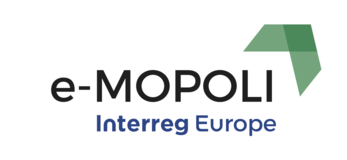A heating is not the only reason of dramatic increase of electricity use. At the moment the only technology available commercially to drive around with no emissions is electric mobility with battery vehicles. National target for transport electrification is at 200,000 electric vehicles in 2030. These 200,000 electric vehicles are supposed to increase peak loading of distribution network for 400 megawatts if electrification was done in today's manner with relatively powerful charging stations. By 2050, the figure of EVs is supposed to be at 1,000,000. How many additional megawatts will that mean? And even further, we need to electrify transport of goods, public transport, air transport, see and waterways transport. How many additional megawatts? This is a tremendous change which is difficult to imagine. In 2020 only about 1500 electric vehicles were sold in Slovenia (Ministry of Infrastructure, 2021), according to Automotive Association 1634 new BEVs were sold. To reach 2030 target, 20,000 should be sold each year.
There are several reasons for demand increase of electricity use in the future. It sounds controversially but our experiences tell us, that additional distributed energy sources installed in the network by prosumers (active consumers of energy with own generation) do not decrease network loading, but increase it. On the diagram below you can see that consumers with its own renewable energy sources took more energy from the network then before they installed their own generation. Reason for that is that photovoltaic generation does not correspond in time with the energy use. In 2020, 370 megawatts of photovoltaic sources were installed generating about 0.3 terawatt hours. That means we are on less than 1% of the way to carbon neutrality. To reach 2030 targets for distributed energy sources the construction intensity and with that investment shall increase by 10 times.

Above the reasons for needed changes in distribution networks were presented. Now we are coming to the question how to support huge changes in distribution network in the most cost effective way? Distribution network needs to support green transition of our society and one thing needed are definitely simplified procedures to get permissions to build network improvement reinforcement expansions. These are preconditions for us to become carbon neutral society and so called paper work is taking bigger and bigger portion of total investment money. Network transformation to support green transition is supposed to be in public interest, isn't it? Already today, the number of customers connected to the network is increasing every year. In the last 10 years in Slovenia, the number of network connections is bigger for about 10%, but expected expansions in the future are for many levels higher. Another issue is regulation of distribution business which must be more simulative for network operators and owners. Further better coordination between spatial planning and present state of the distribution network must be achieved in order to find most effective and cheapest possibilities for development. For sure also very important point of view is proper share of responsibility for power quality in the network. As for the safety on the motorway, not only highway owner can be responsible but also drivers here, also active customers with own power generations have to take their share of responsibility.

To be continued...


![[NEWS] Brescia: E-bike sharing in Brescia](/fileadmin/user_upload/tx_tevnewsevents/news/image_1664960602.jpg)
![[NEWS] Rogaland: battery-only high speed craft](/fileadmin/user_upload/tx_tevnewsevents/news/image_1664804367.png)
![[NEWS] BSC: promoting e-mobility in Gorenjska](/fileadmin/user_upload/tx_tevnewsevents/news/image_1660136312.png)
![[NEWS] BSC: new opportunities for cooperation](/fileadmin/user_upload/tx_tevnewsevents/news/image_1660136159.jpg)
![[NEWS] Rogaland: Solar power for electric airplanes](/fileadmin/user_upload/tx_tevnewsevents/news/image_1660135530.jpg)
![[NEWS] Bucharest: decarbonization of transports](/fileadmin/user_upload/tx_tevnewsevents/news/image_1656521459.jpg)
![[NEWS] Calabria: CENTRE FOR SUSTAINABLE MOBILITY](/fileadmin/user_upload/tx_tevnewsevents/news/image_1655983407.png)
![[NEWS] BSC: rental system network for bikes](/fileadmin/user_upload/tx_tevnewsevents/news/image_1655967495.png)
![[NEWS] Attica: Electromobility in Paiania](/fileadmin/user_upload/tx_tevnewsevents/news/image_1655110894.png)
![[NEWS] Attica: First e-bike festival in Athens](/fileadmin/user_upload/tx_tevnewsevents/news/image_1655110292.png)